Molecular Materials
KIT Expert
Professor Mario Ruben and his 'Molecular Materials' research group at the Institute of Nanotechnology at KIT focus on the materials used for quantum technologies.
The research activities deal with the design of functional nano-systems by state-of-the-art organic/inorganic synthesis and supramolecular self-assembly techniques. We are thematically organised in the interdisciplinary research topics of Functional Molecules, Molecular Electronics and Carbon-based Nanostructures.
Video: Spin-phonon coupling in a single-molecule resonator
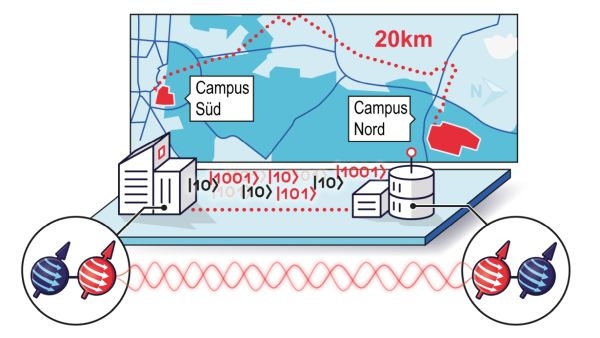
Secure communication is crucial in our interconnected society, and quantum physics offers foundational technologies to enhance security. On January 22, 2025, KIT inaugurated a new 20-kilometer fiber optic test facility aimed at transmitting, testing, and advancing QKD methods. This development is a step toward a global quantum internet, enhancing secure communication capabilities worldwide.
Press Release 003/2025
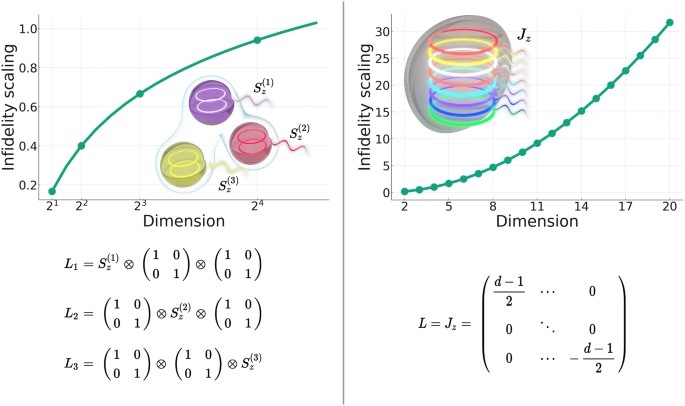
npj Quantum Information 2024 reports a comparative study of gate efficiency for systems composed of sets of qubits versus higher-dimensional qudits by combining analytical results and numerical simulations. Our provide a benchmark for evaluating qudit platforms, specifically those with lower dimensionality, in terms of their operational efficiency relative to the qubit state-of-the-art.
2024. npj Quantum Information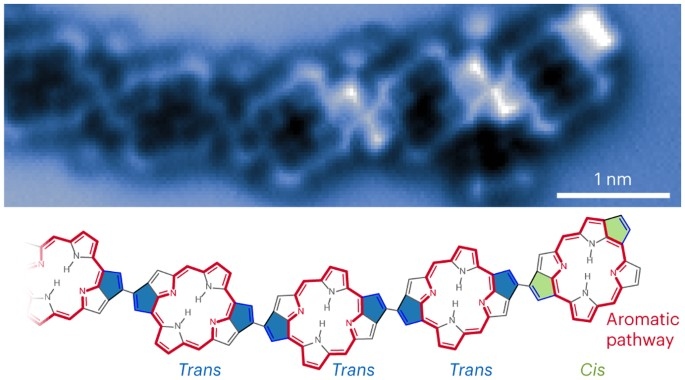
In Nature Chemistry 2023 we investigated how aromaticity affects the reactivity of alkyne-substituted porphyrin molecules during coupling reactions on a Au(111) surface. Our experiments show a substantially lower reactivity of carbon atoms that are stabilized by the aromatic diaza[18]annulene pathway of free-base porphyrins (in collaboration with J.V. Barth, TU München).
2023. Nature Chemistry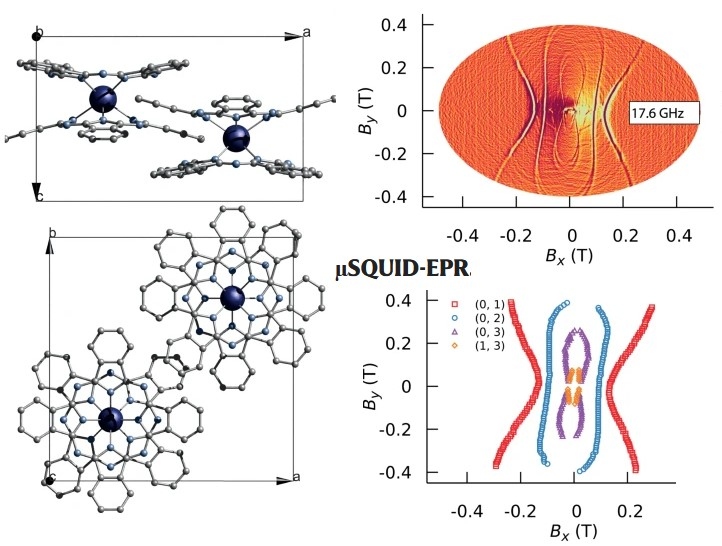
In this work, Nature Comm 2023, we provide access to an experimental technique that allows the direct determination of high-order ligand field parameters by measuring the magnetisation, while simultaneously performing multifrequency EPR studies.
2023. Nature Communications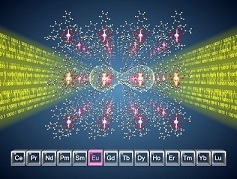
Published in Nature 2022 we present a mononuclear Europium (III) complex, in which the nuclear spins can be read-out and manipulated by photons forming an effective photon-spin interface with potential for distributed quantum computing, see also press.
2022. Nature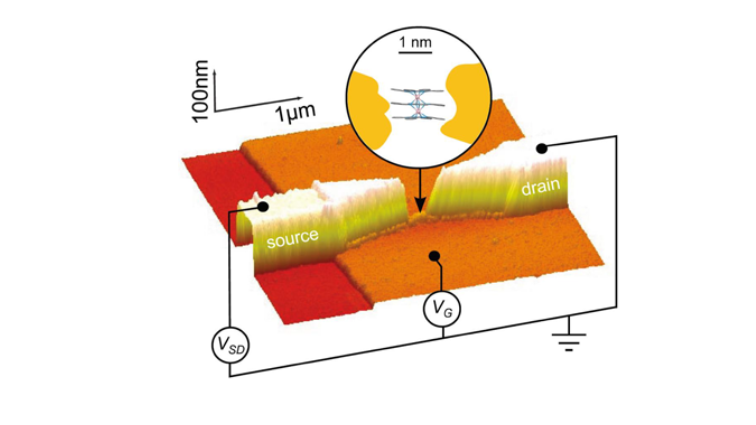
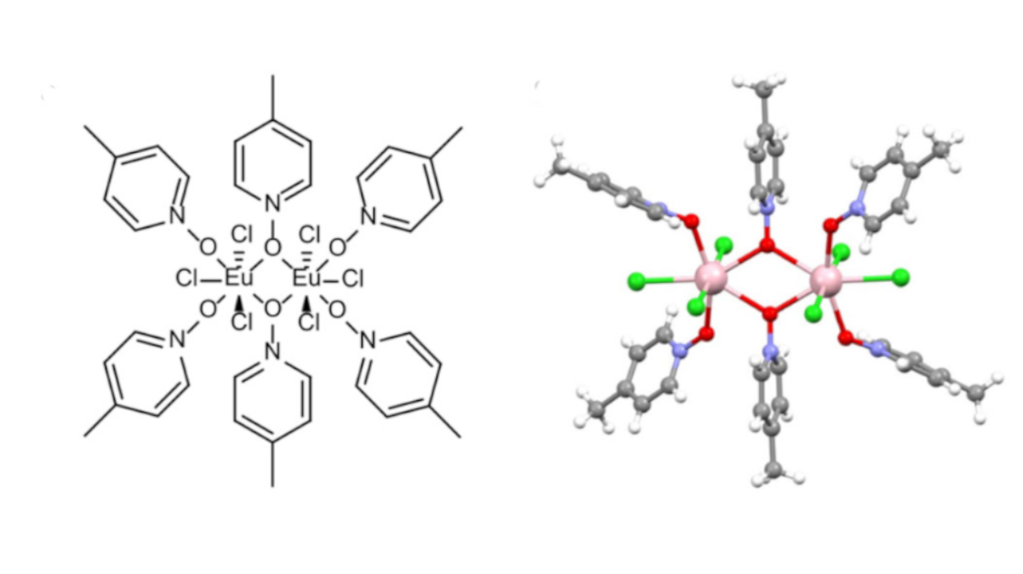
In this work in Nature Comm 2021 we demonstrate the efficient polarization of ground-state nuclear spins—a fundamental requirement for all-optical spin initialization and addressing—in a binuclear Eu(III) complex, featuring inhomogeneously broadened 5D0 → 7F0 optical transition, see also press and video.
2021. Nature Communications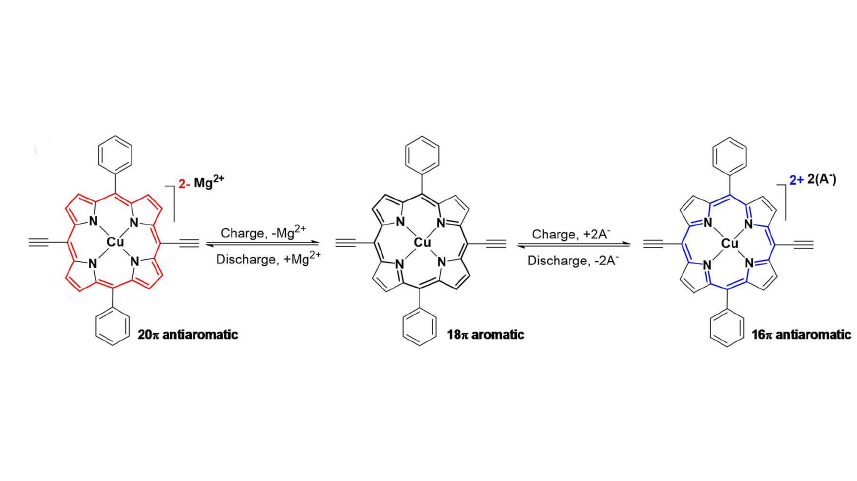
Development of practical rechargeable Mg batteries (RMBs) is impeded by their limited cycle life and rate performance of cathodes. As demonstrated herein, a copper-porphyrin with meso-functionalized ethynyl groups is capable of reversible two- and four-electron storage at an extremely fast rate
2021. ChemSusChem![spin-Crossover Active Iron(II) [2x2]](/img/RG_Ruben/pin-Crossover%20Active%20Iron(II)%20%5b2x2%5d%20_rdax_98.png)
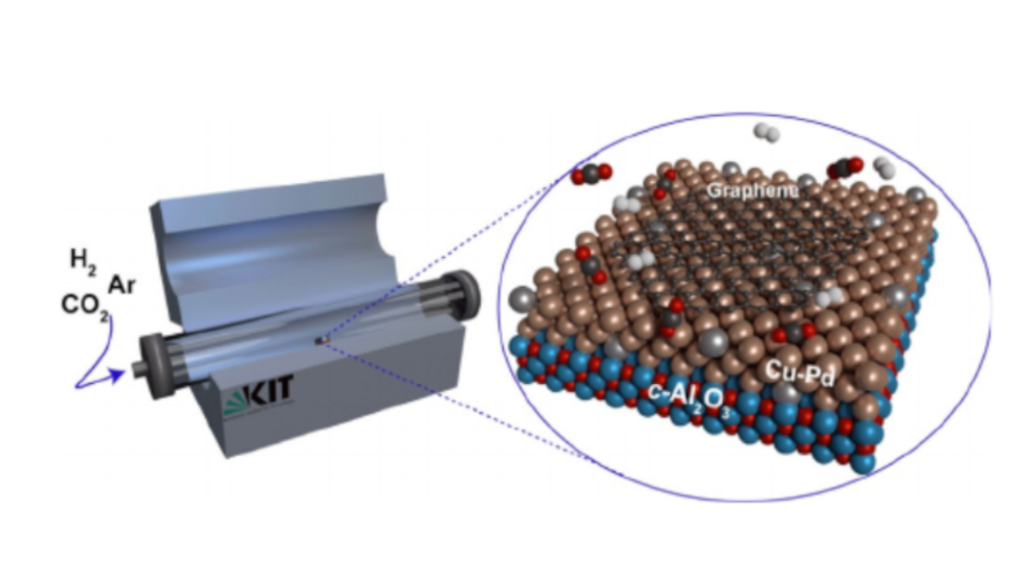
A straightforward one-step process was developed, in which CO2 gas is directly converted into multi-layer graphene via atmospheric pressure chemical vapor deposition (APCVD). A bimetallic alloy film based on Cu and Pd was employed as the catalyst and substrate.
2019. ChemSusChem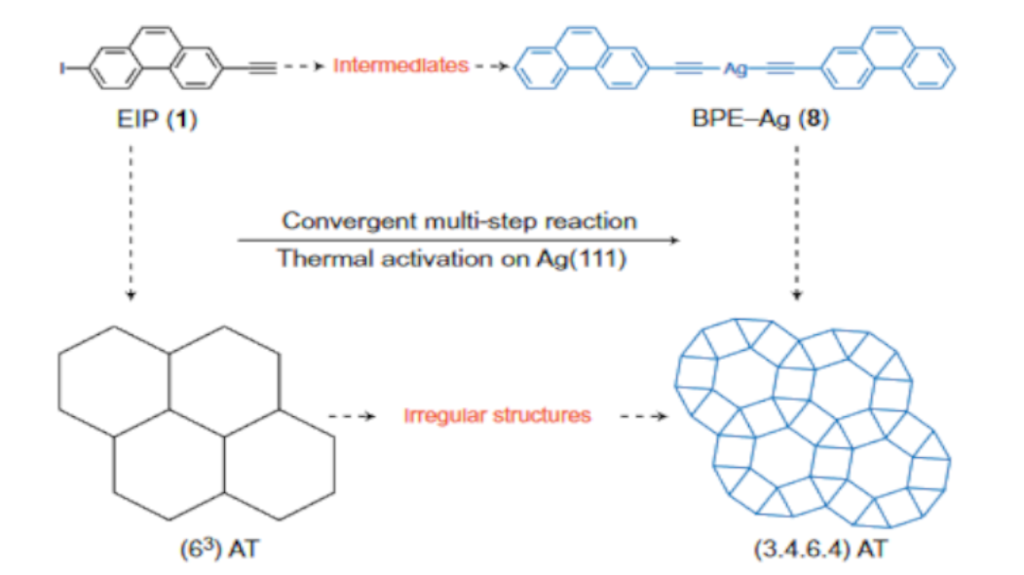
Interfacial supramolecular self-assembly represents a powerful tool for constructing regular and quasicrystalline materials. In particular, complex two-dimensional molecular tessellations, such as semi-regular Archimedean tilings with regular polygons, promise unique properties related to their nontrivial structures.Here, we have chosen ethynyl-iodophenanthrene (which features dissymmetry in both geometry and reactivity) as a single starting precursor to generate the rare semi-regular (3.4.6.4) Archimedean tiling with long-range order on an atomically flat substrate through a multi-step reaction.
2018. Nature chemistry![Et4N[DyPc2]](/img/RG_Ruben/Et4N%20Ausschnitt_rdax_1024x576_98.png)
Since the discovery of magnetic memory at the single-ion level, several applications have been foreseen for lanthanide-based single-molecule magnets (Ln-SMMs), ranging from data storage to spintronic devices. Amongst the many conceivable applications, probably the most ambitious one is related to the integration of Ln-SMMs in quantum information schemes acting as quantum bits (qubits). Although seemingly a long-term goal, in fact Ln-SMMs have already shown several of the required DiVincenzo characteristics needed to perform as nuclear spin qubits.
2017. Angewandte Chemie / International edition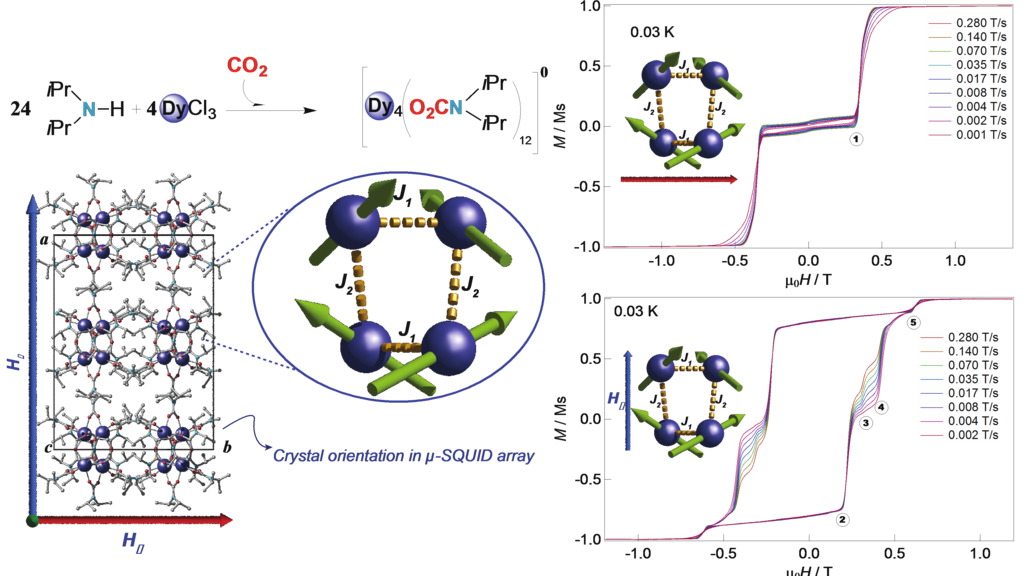
A publication in Chemical Sciences shows how Single Molecule Magnets (SMMs) exhibiting exchange coupled QTM can be synthesized by insertion of environmentally harmful CO2.
Chem. Sci., 2017, Advance Article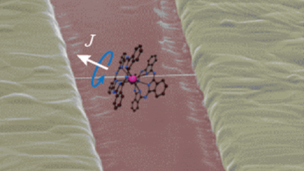
The Einstein–de Haas effect at the quantum level has been demonstrated using a single-molecule magnet attached to a carbon nanotube mechanical nanoresonator.
Nature Commun. 2016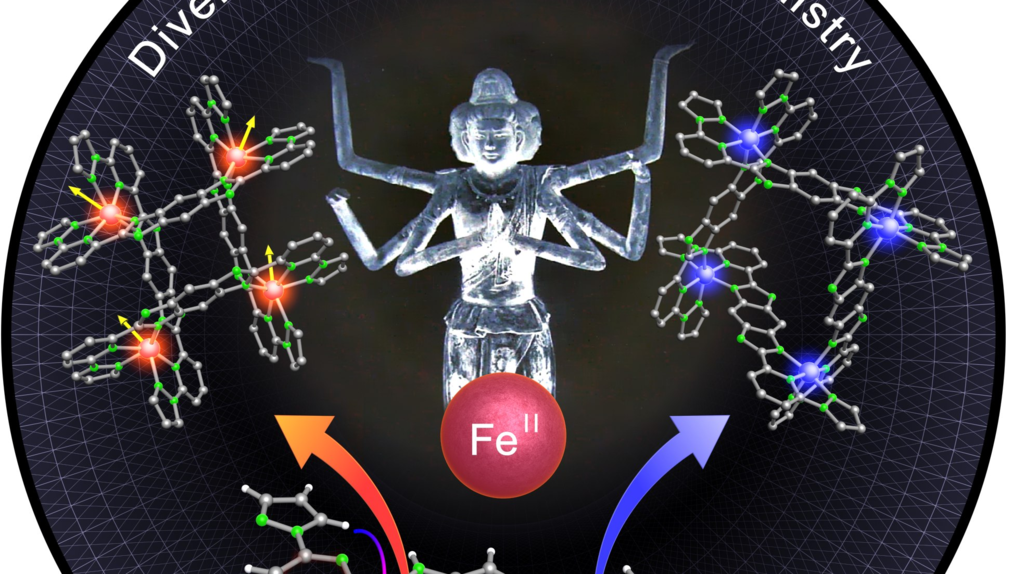
Divergent Coordination Chemistry is featured by two, in parallel synthesized tauto-isomeric Fe(II)4 L4 tetramers differing strongly in their magnetic properties. Cover
Angew. Chem. Int. Ed. 2016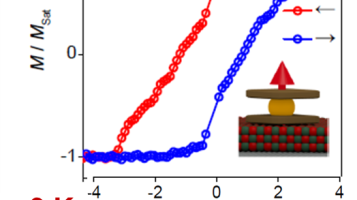
TbPc2 single-molecule magnets adsorbed on a magnesium oxide tunnel barrier exhibit record magnetic remanence, record hysteresis opening, perfect out-of-plane alignment of the magnetic easy axes, and self-assembly into a well-ordered layer. Cover
Advanced Materials 2016
A rational design approach guided by theoretical calculations is used to customize the spin texture of surface states of a topological insulator (TI) Bi2Se3. These tailored interface properties—passivation, spin-texture tuning, and creation of hybrid interface states—lay a solid foundation for interface-assisted molecular spintronics in spin-textured materials.
Nano Lett 2015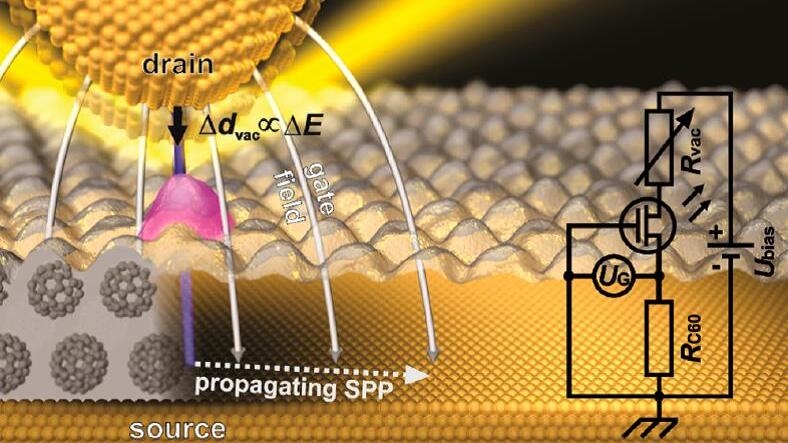
Controlling light at the nanoscale by electrical fields requires objects, in which electro-magnetic properties are responsive to gating fields. In two recent publications it was shown that molecules fulfil this requirement and act as such quantum transducers. This article was presented as research highlight in Nature Photonics.
Nano Letters 2013 &

A recent publication in Science shows how coherent single nuclear-spin manipulation using electric fields only can be achieved. This quantum-mechanical process is present in all nuclear spin systems and uses of the hyperfine Stark effect as a magnetic field transducer at the atomic level.
Science June 2014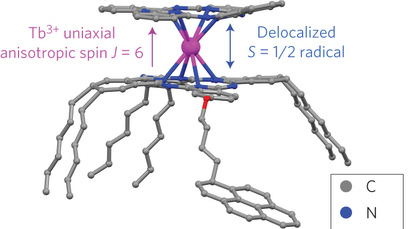
12-2012
A single TbPc2 molecule and a carbon nanotube interact electro-mechanically as quantum objects.
Nature News and Views by Richard Winpenny.
Nat. Nanotechnol. 2013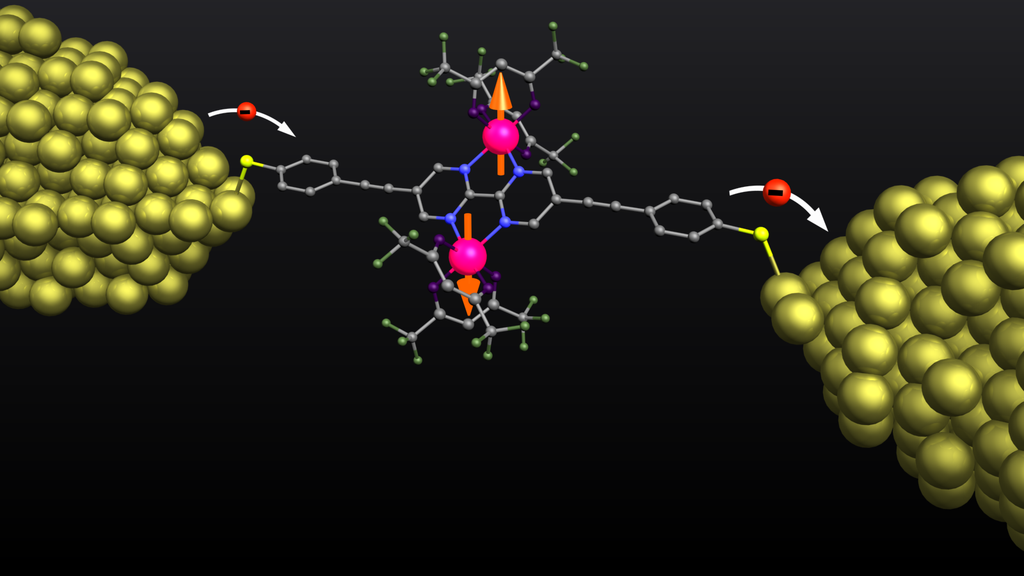
The spin state of a coupled spin-system can be switched electronically.
Nat. Nanotechnol. 2013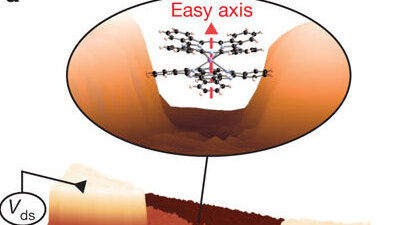
For the first time nuclear spin states could be read out electronically by integrating single quantum magnets into circuits. Long nuclear spin lifetimes (tens of seconds) and exceptional relaxation characteristics at the single-atom scale open the way to a completely new device world, into which quantum logics may be implemented. Nat. Nanotech. News and Views by Herre van der Zant.
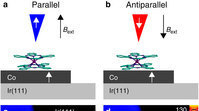
In collaboration with the group of R. Wiesendanger we report the first direct real-space images of spin-split molecular orbitals at a TbPc2-Co(111) spinterface.
Spin Split in Nat. Commun. 2012
